Beware, The Ides of March! A dark ambient & death industrial mix honoring the day of Julius Caesar’s assassination. The death of Caesar in 44 BCE made the Ides of March a turning point in Roman history, as one of the events that marked the transition from the historical period known as the Roman Republic to the Roman Empire.
01. 0:00:00 Apocryphos, Kammarheit, Atrium Carceri – “In An Arched World”
02. 0:06:10 Aegri Somnia – “Mundus Moriens”
03. 0:11:50 Lamia Vox – “The Prophecy”
04. 0:17:45 Monocube – “Initiation” (feat. Asmorod)
05. 0:22:40 AFFECTVS & Lamia Culta – “Ventus Mortuus”
06. 0:28:30 Cities Last Broadcast – “Deadpost”
07. 0:31:30 Desiderii Marginis – “I Tell The Ancient Tale”
08. 0:36:30 Herbst9 – “Purifying Ceremony”
09. 0:40:50 Wolves and Horses – “Procession”
10. 0:46:45 Paul Minesweeper – “Clarions of Arrival”
11. 0:51:30 Coph’antae Tryr – “Nothing to Near”
12. 0:55:10 Gnawed – “The Hand That Feeds”
13. 1:03:10 The Vomit Arsonist – “Blood”
14. 1:06:55 Council of Nine – “Fallen”
15. 1:12:45 Phragments – “Into Nothing”
16. 1:18:30 Kammarheit – “The Excavation Site”
17. 1:27:10 Flowers For Bodysnatchers – “Where The Carcass Lies”
18. 1:36:05 SiJ & Item Caligo – “So Terrible to Contemplate”
19. 1:41:30 Apocryphos – “Clandestine” (feat. Kave)
Month: March 2017 (Page 2 of 4)
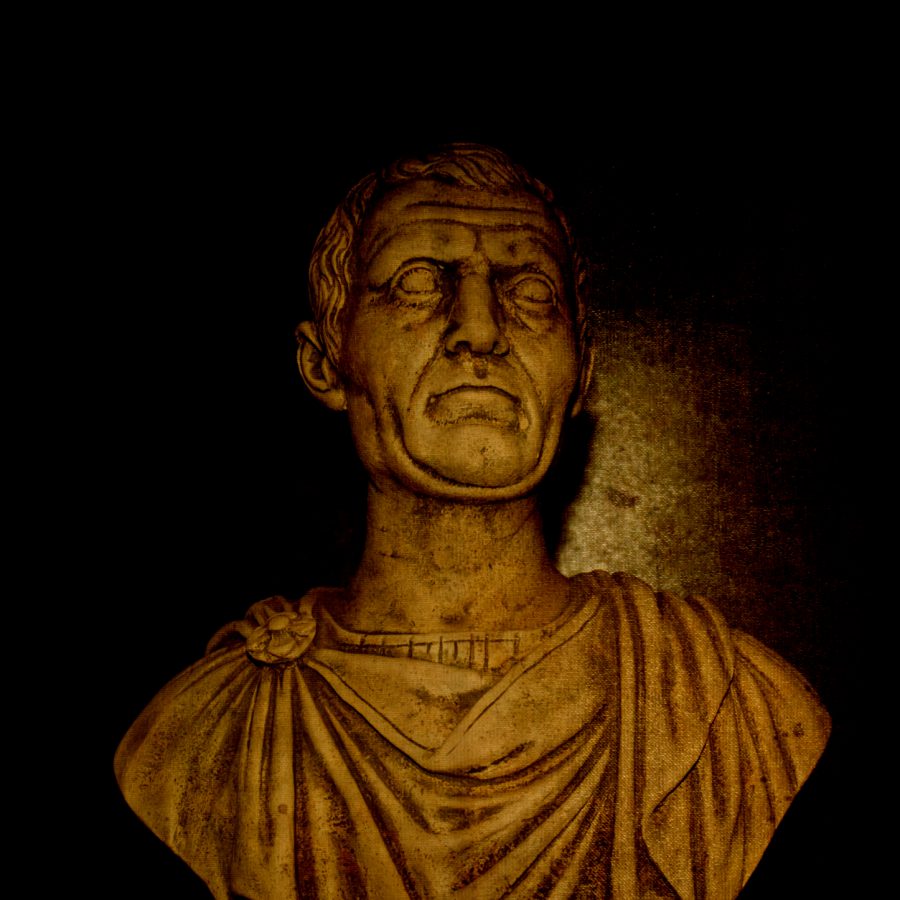
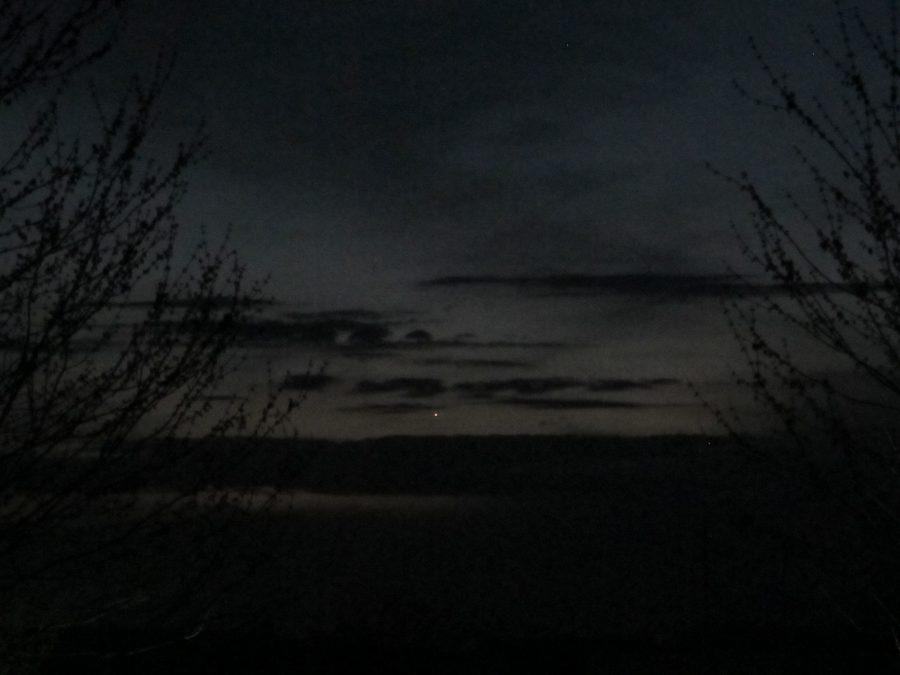
This is a 6 1/2 hour dark ambient sleep mix. It is designed to start out slightly active, giving the mind a bit of entertainment as you move into a relaxing state, then it becomes more subtle to help you fall asleep and stay asleep.
Playlist:
01. 0:00:00 Cities Last Broadcast – “Lights Out”
02. 0:01:50 Aythis – “Dustfall Ascending Infinite”
03. 0:05:50 Northumbria – “Ice Moon”
04. 0:13:50 Kammarheit – “Hypnagoga”
05. 0:17:40 Ionosphere – “Polarized Light”
06. 0:22:05 Winterblood – “Visione delle Brume”
07. 0:27:20 Sleep Research Facility “72S 149E”
08. 0:38:30 Kammarheit – “Sphaerula”
09. 0:44:20 Svartsinn – “Entrance to Emptiness”
10. 0:51:20 Sun Through Eyelids – “Agartha”
11. 0:54:25 SiJ & Item Caligo – “Her Soul Involuntarily Yearned For Rest”
12. 0:58:25 Flowers For Bodysnatchers – “And There is a Darkness”
13. 1:07:40 Hymnambulae – “Polarsidan”
14. 1:13:10 Northaunt – “Istid”
15. 1:25:55 Apocryphos – “Clandestine featuring Kave”
16. 1:35:10 Oystein Jorgensen – “Sorrow”
17. 1:40:05 Zalys – “Cosmic DNA”
18. 1:45:43 God Body Disconnect – “Dreaming of Glaciers”
19. 1:52:35 Apocryphos, Kammarheit, Atrium Carceri – “All Dreams Mined”
20. 1:59:20 Sphare Sechs – “Phase VIII”
21. 2:05:10 Wind – “Dark Gloomy Night II”
22. 2:28:50 Robert Rich – “Region I (excerpt)”
23. 3:07:20 Dronny Darko & protoU – “Riparian Forest (300 million years ago)
24. 3:14:00 Angelo Badalamenti – “Hauntings & Heartbreaks”
25. 3:15:40 Ugasanie – “Endless Winter”
26. 3:20:30 Morvranh – “The Night When She Disappeared”
27. 3:23:55 Altarmang – “Aether”
28. 3:38:40 protoU – “Stygian Vortex”
29. 3:46:20 Taphephobia – “Night’s Origin”
30. 3:52:30 Ashtoreth – “Tymor”
31. 4:18:50 Alphaxone – “Solitude”
32. 4:23:25 Ajna & Dronny Darko – “1000 Years of Cryosleep”
33. 5:06:00 Apocryphos, Kammarheit, and Atrium Carceri – “Night So Close to the Tongue”
34. 5:11:55 Phelios – “Vox Coelestis”
35. 5:18:05 Alphaxone & protoU – “Planemo Dreams”
36. 5:26:30 Xerxes The Dark – “Oblivion”
37. 5:32:45 Seetyca – “The Stars”
38. 5:40:20 Psychomanteum – “The Existential Collapse and Rebirth”
39. 5:49:50 SiJ – “Realm of Eternal Rain”
40. 5:58:40 DeepDark – “To The Stars”
41. 6:04:40 Noctilucant – “Devouring Night”
42. 6:09:30 Kammarheit – “Dreams and Seracs”
43. 6:15:35 Taphephobia – “Timeless Silence for the Mind”
44. 6:20:50 Hoshin – “Dissolving Steps”
45. 6:26:00 The Human Voice – “Deep Blue”
46. 6:32:25 Sonologyst – “Ceremony”
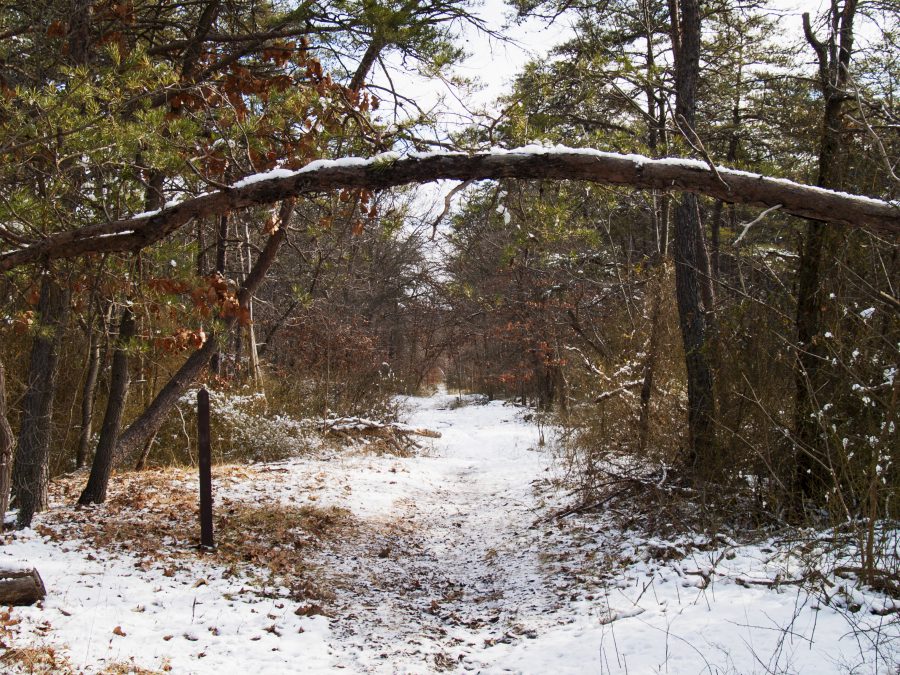
This Is Darkness presents you with our latest mix, “Winter Mix 2017”. Predominantly dark ambient, the mix also contains a bit of neo-folk and post-rock, making it a more dynamic listen. Recommended for chilly days behind closed doors, peering out the window at the icy landscape.
01. Ugasanie – “North Breath” from Border of Worlds
02. Wolcensmen – “Snowfall” from Songs From The Fyrgen
03. Altarmang – “Aether” from Void
04. Sun Through Eyelids – “It Comes In Waves” from Pathways of the Lost
05. Enearth – “Dream Evil” from Come Into My Dream
06. Winterblood – “Passaggio Soprannaturale 1” from Passaggio Soprannaturale
07. Angelo Badalamenti – “Haunting & Hearthbreaking” from Lost Highway O.S.T.
08. Wolves and Horses – “Aphelion” from Tomb of Seers
09. SiJ & Item Caligo – “It Was Good To Destroy Once Again” from Queer Reminiscence
10. This Will Destroy You – “A Three-legged Workhorse” from This Will Destroy You
11. Apocryphos, Kammarheit, & Atrium Carceri – “Drawn Like A Moth” from Echo
12. Sana Obruent – “The Preparation” from Dyatlov
13. The Caretaker – “We Don’t Have Many Days” from Everywhere At The End Of Time
14. Paul Minesweeper – “Icebound” from Last Frontier
15. Apocryphos – “Sesam In Winter Lights” from …that first season – A Winter-Light Compilation
16. Angelo Badalamenti – “Fred’s World” from Lost Highway O.S.T.
17. Enmarta – “March of the Priests” from The Hermit
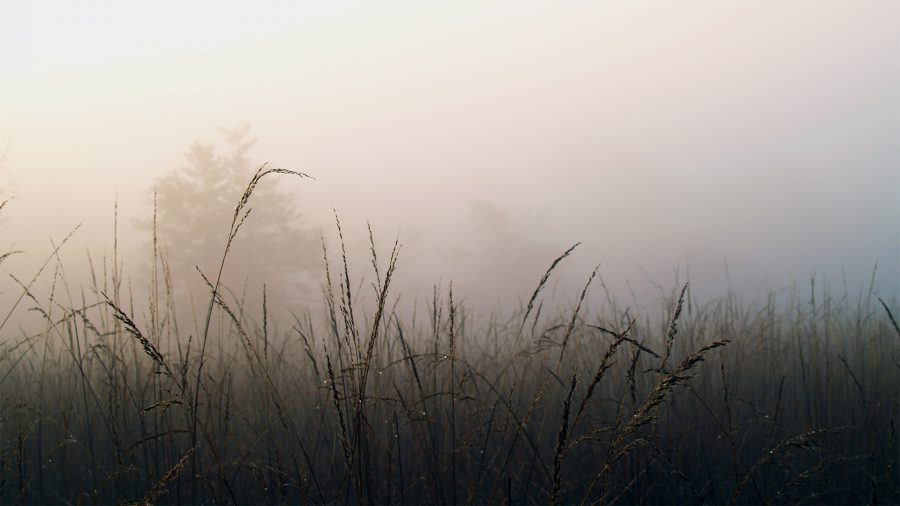
Terra Relicta & This Is Darkness Present: Autumn Mix 2016
This playlist seeks to harness the sounds of autumn, through a dark ambient (and similar genres) landscape. Watch the leaves fall as these sounds help prepare you for an early hibernation.
Playlist:
0:00:00 Phragments – All Towers Must Fall
0:06:20 New Risen Throne – Withered
0:13:40 Ugasanie – Mushroom Fog
0:17:30 Dronny Darko – Grey Echoes
0:22:10 Bohren und der Club of Gore – Zombies Never Die
0:28:30 Northumbria – Ice Moon
0:36:00 Svartsinn – Towards the Dark and Cold
0:45:50 Flowers For Bodysnatchers – L’amour a Mort
0:48:40 raison d’etre – The Awakening
0:56:10 protoU – Voices of the Water
1:00:30 Aythis – Dustfall Ascending Infinite
1:04:10 Subheim – Foray
1:08:30 Hymnambulae – Polarsidan
1:13:50 Beyond Sensory Experience – Time Travels
1:19:20 Wordclock – Lack of Language
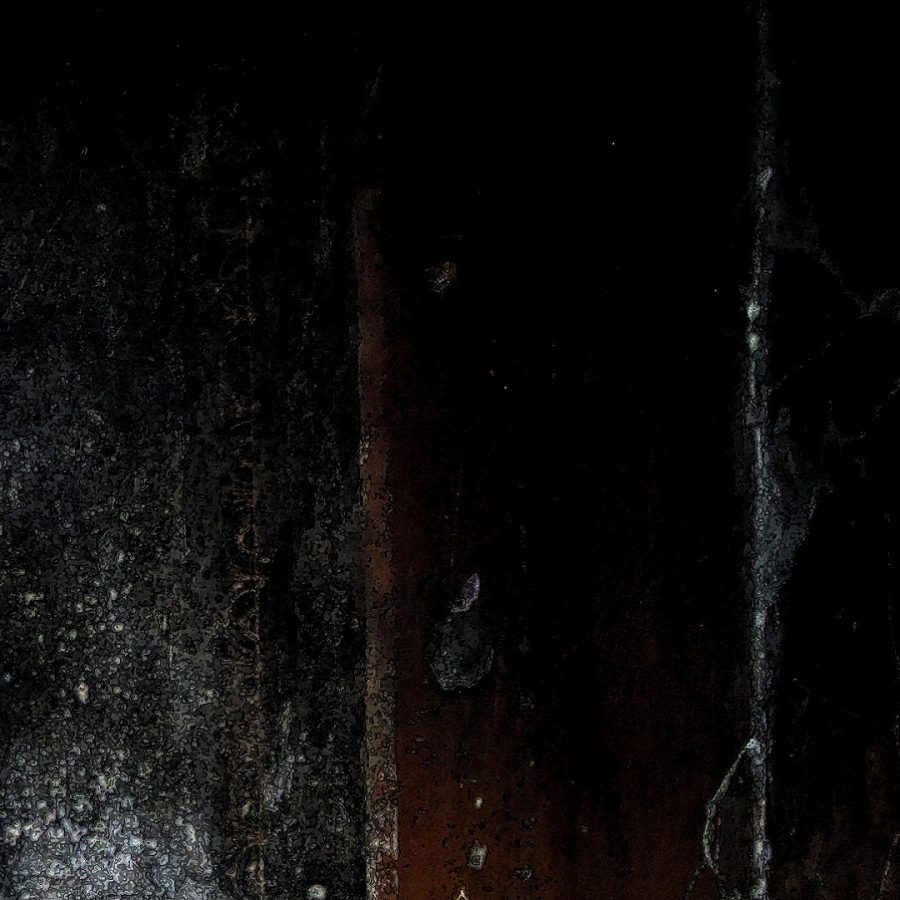
This Is Darkness Presents: Halloween Dark Ambient Mix – 2016
0:00:00 Atrium Carceri “Quarantine”
0:01:55 Tehom “Darkness Cosmogony of Myths”
0:05:15 Kammarheit “I Found It Weeping In The Field”
0:13:00 Cryobiosis “Murkfall”
0:17:10 The Haxan Cloak “Consumed”
0:18:40 Ruairi O’Baoighill “Boithrin Dorcha”
0:23:45 Hoshin “The All Is Aflame”
0:29:35 Dronny Darko “Rotten Orchestra”
0:34:40 Black Sun “Hymn To Lucifer”
0:39:45 Lamia Vox “Enemy of Heaven”
0:45:00 SPINE “The Dying Process”
0:52:15 Druhá Smrt “Deathward”
0:59:35 Inade “The World Behind The World”
1:05:35 Aegri Somnia “Faux Prophet”
1:11:15 Svartsinn “As A Black Stone Monument”
1:14:50 Apocryphos “Tenebrous”
1:23:10 Cities Last Broadcast “Lights Out”
1:24:00 raison d’etre “Inner Depths of Sadness”
1:29:15 Taphephobia “She’s Hiding In The Shadows”
1:33:45 Phelios “Eye of Terror”
1:41:00 Apocryphos, Kammarheit, Atrium Carceri “Avenoir”
Total runtime: 1hr45min
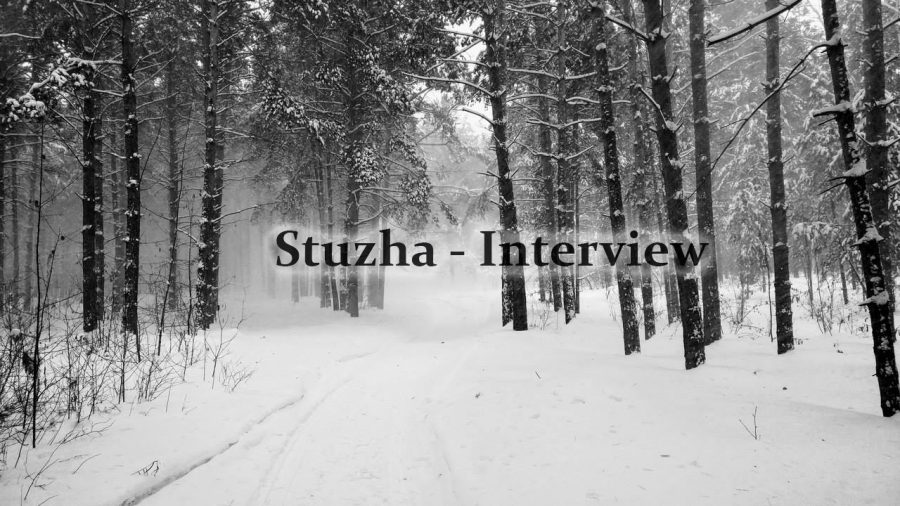
Interview with: Stuzha
Conducted by: Michael Barnett
Stuzha is a dark ambient artist from Siberia, in the northern reaches of Russia. In a frigid environment like Siberia, it is no surprise that Stuzha gravitates toward a polar ambient style. The music is heavy in field recordings and takes the listener on an aural journey through these frozen lands. With a re-issue of his debut album, and the possibility of something new on the way, it seemed like the perfect time to interview Daniil, the man behind the music. Put on your warmest coat, because the music and conversation are about to take you into the sub-zero environs that many of us will never experience first-hand.
Michael: Thank you so much, Daniil, for agreeing to speak with me about your dark ambient project, Stuzha. For readers who aren’t familiar with your sound, could you give me a short description of Stuzha?
Daniil: Hi Michael, thanks for having me here. Stuzha‘s sound evolves over almost two decades now. It is hard for me to link it with some well-defined musical genres, but the long-term Stuzha companions are field recordings and guitars. Initially, started with moody folk-ambient dark tunes, acoustic mainly, and later developed a denser “drony” sound. I’d describe the project using tags: cinematic, drone, dark, ambient. The most important, however, is the atmosphere and field-recordings associated with it. I record various outdoor sounds and while listening to them I generate ideas of wrapping them into a musical piece. There is a lot of associative thinking going on.
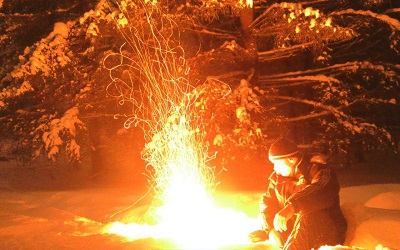
Michael: How long have you been a fan of dark ambient music?
Daniil: Probably around 20 years now… I can remember dark ambient as a relatively fresh genre in the musical scene. I’d say that it somehow spiraled from black, drone, doom, gothic metal and old-school ambient into an independent genre. The similarities between styles are quite evident, yet emotions are different.
Michael: Who are some of your earliest influences, which led you to record in this genre of music?
Daniil: I’d say that the majority of ambient releases during 2000-2005 period were quite influential, to name a few: Raison d’etre, Desiderii Marginis, Vidna Obmana, Arcana, Vali, Northaunt, Kammarheit, Phelios, and others. However what actually triggered me to start composing my own music is the Burzum album, Filosofem and Angelo Badalamenti’s music, especially his Twin Peaks soundtrack. The latter is just a magical piece of work that was immortalized by the amazing David Lynch’s TV-series (of course I’m awaiting the new season!). Another great example of such a powerful ambient-visual marriage is the music of Olafur Arnald, and the recent Broadchurch TV-series. To me those bundles are quite inspirational, the same goes to Tarkovsky films and Edward Artemiev music. To all of my projects the story is of high importance, I cannot do anything too abstract.
Michael: I hope you don’t mind my saying, Stuzha, expecially Through the Snowfield, reminds me very much of the first two Northaunt albums, in many ways. The use of raw field recordings along with the addition of samples brings the music about as close to a cinematic musical soundtrack, portraying some frozen northern journey, as dark ambient is able to achieve. Do you feel that you have been influenced by Northaunt, or is this just a coincidence. (note: Northaunt is one of my very favorite musical projects, so I was utterly delighted to find some other artist who makes a comparable sound.)
Daniil: I am certainly fond of Northaunt music and without a doubt his Horizons is an hugely inspirational album to me. I met Hærleif in 2013 at the Blåsvart Aften Vol.7 event (highly recommend to visit). It was my pleasure to talk to such a modest and intelligent man. Its always amusing to see people behind dark music not being so dark in real life. Or is it well-played optimism? His recent album Istid I-II I also find very interesting and actually not so gloomy as some of previous releases. I also can recommend his recent release from The Human Voice project. Very relaxing and calm release to listen to. In fact, I’m listening to it now while writing this. I guess it is a slightly more personal project than Northaunt.
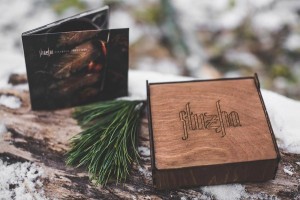 Michael: Your two full-length releases seem to take a unique life of their own, or did the themes dictate these differences?
Michael: Your two full-length releases seem to take a unique life of their own, or did the themes dictate these differences?
Daniil: They are topical, yes. Also, I slightly changed my attitude towards music since the release of Siberian Sketches. Bringing folklore elements to the latest Stuzha release was not an option considering the chosen topic.
Michael: Butugichag, your 2015 release, focused on a very specific theme, the Soviet gulag system. Specifically, the Siberian labor camps of Kolyma. Did this concept have any personal significance to you and your family?
Daniil: Fortunately, there is nothing personal. The choice of topic was a mere reflection on things I read and watched. At the time I was overwhelmed by various emotions and decided to put them into something more solid. I’m also quite interested in the history of the country where I was born. In Russian, history there is not black and white but only a gradient; it is impossible to tell immediately what is good or bad. Things are complicated as they are, yet people still can make them worse. It was always about the suffering of remarkable people, and unremarkable people with immense power to impose the suffering. To make it more ‘fun’ for everybody, the history keeps switching places. Once those despised and rejected may become leaders. Some carry the baggage consisting of personal fears which later turned into pure hatred.
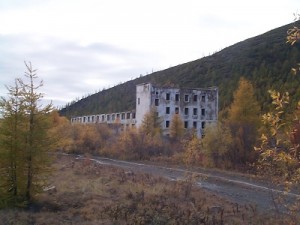 What I wanted to show with Butugichag is just an example of an extremely dark place which was deliberately crafted by human beings to destroy their own kind. To think about it… once free people imposed the worst possible destiny on themselves by following the path of hatred and fear ignited by the rotten ideology. It is not a political album, that sort of thing can happen in every state if ruling boundaries pushed to extreme. My aim is to lead a listener to this place mentally and ask the question, why did it exist in the first place? I think we need more conceptional “think about it” albums which can lead you to some questions. This is, for example, why I quite like the albums of Velehentor, although musically I’m not always resonating well with them.
What I wanted to show with Butugichag is just an example of an extremely dark place which was deliberately crafted by human beings to destroy their own kind. To think about it… once free people imposed the worst possible destiny on themselves by following the path of hatred and fear ignited by the rotten ideology. It is not a political album, that sort of thing can happen in every state if ruling boundaries pushed to extreme. My aim is to lead a listener to this place mentally and ask the question, why did it exist in the first place? I think we need more conceptional “think about it” albums which can lead you to some questions. This is, for example, why I quite like the albums of Velehentor, although musically I’m not always resonating well with them.
Michael: You are Siberian by birth, but if I’m correct, you have now moved to England? Why did you decide to make this move? Will England be your permanent residence?
Daniil: Yes, I moved to the UK about 8 years ago. Personally, it was not a very difficult decision to make since my career prospects were quite dim. Science is not well supported in Russia, people in power are busy with more ‘important’ things, and after my PhD I had to decide either I’m going into industry or looking for a job in academia elsewhere. The decision to skip a job in industry was not actually a bad one, since the oil industry (I’m a geophysicist) is not doing great at the moment. So, I moved to the UK and some time after my wife joined me here. We are British now, but it is hard to say whether we will stay in the country permanently. There are still many factors that can influence it. We actually quite like warmer countries (laughing).
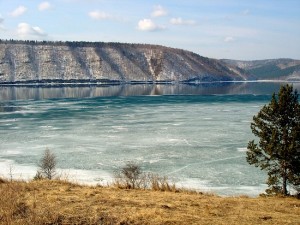 Michael: As a Siberian, what are some of the things about this part of the world which left a lasting impact on you?
Michael: As a Siberian, what are some of the things about this part of the world which left a lasting impact on you?
Daniil: I certainly miss the Siberian nature. I’ve been to many places, yet the feeling of a total self-composure can exist only there. Siberia, it is like open space sometimes, you can quickly dissolve yourself there. Be gone and lost within minutes. This hardly can be done in Western Europe. The civilisation bursts around you and there is no quick escape. In Siberia, also the farther east you go, the wilder it can get. I think the Baikal Lake and surroundings had the biggest impact on me. I still often go there in my dreams.
Michael: Your debut album Siberian Sketches was very diverse. The theme of Siberia was consistent throughout the album. But, the sounds themselves were wildly varied. For instance on track 4, “Deti Podzemelyz”, you have incorporated what I assume to be some Russian opera music. The use of this audio sample really livens up the album, making it a more dynamic and active listen. Then there are other tracks which are more field recording focused. Still others highlight sounds of an acoustic guitar. Was this diversity something you consciously achieved, or did it happen naturally, almost like an accident?
Daniil: At that time I was not planning albums as I do now. The album was recorded during 3-4 years time span. Every song is actually related to a certain event in my life, in this case a travel. I was visiting different places and had mixed feelings on my return. This is why the album can be be slightly “sketchy” sometimes. I think it will be hard for me to do something like this now. Taking Butugichag for example, it was a focused work towards a solid, coherent album. Who knows if Siberian Sketches II will be “sketchy” enough?
Michael: There is a good bit of guitar-work in Stuzha, some electric and some acoustic. How long have you been a guitar player? Have you ever played guitar in a metal band, or some other genre?
Daniil: Oh I’m a rubbish guitar player actually. I had an acoustic guitar teacher sometime ago, and approached the stage when I could play something from notes… but I got quickly bored. I already knew by then why I’m learning guitar so it was sufficient more or less. When I do recordings I can spend lots of time practising a riff.
Michael: Is guitar the only traditional instrument you play?
Daniil: Loosely speaking I can play a piano quite lousy (laughing). I do synth playing for the Algol project. This is generally a slow tempo work. I’m more into sound extraction and processing than actually playing things technically.
Michael: Are there any very interesting places that you have captured field recordings? Do you gather these slowly over the years, or do you take extended journeys into the wild to capture these sounds?
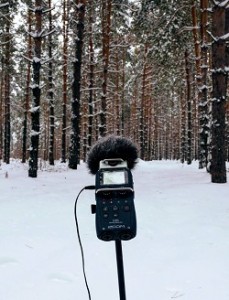 Daniil: There are interesting places and risky moments. Recently, I’ve been through an extensive winter field-recording session in Siberia. The first time after 8 years of no winter! The sounds are really great and hopefully they go to my next Stuzha album. This was a bit of hard work since it was pretty cold outside as you can imagine in January (around -35°C at night or 0°F). Another interesting recent experience was in Switzerland when I was recording some wind on a mountain. Suddenly, a huge piece of ice fell a few meters away from the top peak. It literally almost killed me… and I managed to record it. This will certainly go into my album! So, as you can see, it is pretty dangerous work! I will go to Iceland to do some recordings soon. Do you think it is a crime to mix Siberian-Icelandic field recordings for the album about Siberia? (laughing) Don’t worry I will not do that, the purity of the product is important to me.
Daniil: There are interesting places and risky moments. Recently, I’ve been through an extensive winter field-recording session in Siberia. The first time after 8 years of no winter! The sounds are really great and hopefully they go to my next Stuzha album. This was a bit of hard work since it was pretty cold outside as you can imagine in January (around -35°C at night or 0°F). Another interesting recent experience was in Switzerland when I was recording some wind on a mountain. Suddenly, a huge piece of ice fell a few meters away from the top peak. It literally almost killed me… and I managed to record it. This will certainly go into my album! So, as you can see, it is pretty dangerous work! I will go to Iceland to do some recordings soon. Do you think it is a crime to mix Siberian-Icelandic field recordings for the album about Siberia? (laughing) Don’t worry I will not do that, the purity of the product is important to me.
Michael: Now that you are living in England, a place which I assume is much more densely populated than Siberia, do you find it harder to collect field recordings? Is it harder to find inspiration in the warmer climate?
Daniil: Sure, it almost impossible to record anything here. I was trying to record something in Wales on the mountain yet still there were planes passing above quite frequently! Regarding the inspiration in the warmer climate – the answer is yes and no. It is much harder for more bleak and cold associations (so Stuzha is not a winner here), yet you can get some inspiration about other stuff. Now I’m talking about my other active projects: Algol and Black Wanderer. For Stuzha, I think a trip back home or somewhere up North would be an optimal place to record a new album. I’m thinking about going to Scotland for a week next winter to stay in the hotel, alone, somewhere rural…
Michael: Do you consider the cold, isolated north to be a central theme to Stuzha? Do you intend to stick to this template for all future Stuzha albums?
Daniil: I’m thinking about suspending the project after the next release (possibly next year). It’s getting increasingly hard for me to sustain its viability while being based in the UK. I will shift attention to my other projects.
Michael: Your debut, Siberian Sketches, was recently re-released through Ksenza Records and Infinite Fog Productions. What kind of additions did you make to the album for this re-release? Are you happier now that this updated version is available for fans to discover or re-discover?
Daniil: The re-released version is extended with 3 new tracks and also remastered with added bass guitar. I think it sounds more mature and complete now. Ksenza also did great work on the artwork and the updated quality of the release, so yes I’m happy.
Michael: As Stuzha, you have released two full length albums and one EP, entitled Through The Snowfield. Which, I might add, is also brilliant. What can we expect of Stuzha next? How soon might we be expecting your next release?
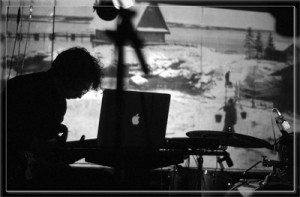 Daniil: Thanks. So in future plans I intend to use field-recorded material and work on Siberian Sketches II. This is a winter counterpart, which is different to the first release, which featured spring-autumn recordings mainly. This should close the cycle of the Stuzha albums about Siberia. Maybe I will move to other topics, but at the moment I’m not sure if I want to link Stuzha with them.
Daniil: Thanks. So in future plans I intend to use field-recorded material and work on Siberian Sketches II. This is a winter counterpart, which is different to the first release, which featured spring-autumn recordings mainly. This should close the cycle of the Stuzha albums about Siberia. Maybe I will move to other topics, but at the moment I’m not sure if I want to link Stuzha with them.
Michael: Many dark ambient artists like to create a sacred space for their recording sessions. Maybe they will burn some incense, meditate, or something like this, in order to achieve a higher state of consciousness. Do you have any of your own rituals, which you follow during each session?
Daniil: I do like burning stuff, and probably a fire in the forest would be my first choice to boost inspiration. Maybe I should get a house with a fireplace? But seriously, I can do a bit of candles sometimes, but the right mood is the most important component. I never record anything under influence of alcohol or when I’m sick. It somehow ruins the magic and I get a bit pissed-off about it.
Michael: Do you think the apocalypse is coming? If so, how do you think it will happen?
Daniil: Everyone will have their personal apocalypse before the real one comes. I can easily slip into some depressing stuff here, so in brief, I just say that we’re not doing so well as some other species on this planet. Our strong desire to feed on desires disregarding the common sense will lead to self-destruction. We somehow decided that we are chosen and we do all in our power to prove this wrong. If humanity will not start thinking hard about the future of this planet we will end up in the ditch much sooner than the real apocalypse will come. By real apocalypse I mean, for example, a huge asteroid strike or super-earthquake. We have to be prepared to solve outer global problems and not spend all resources to feed personal egos. I’m not being an alarmist I just don’t like the state of the world today.
Michael: You recently released a music video for another project, Black Wanderer. Is this a project that you will be spending more time on in the near future?
Daniil: Black Wanderer is a new cinematic drone project. It is truly cinematic since I actually extract and reuse monologues/dialogues from various movies. These are mainly not so fresh but great sci-fi movies, such as, The Thing from Another World, Day The Earth Stood Still, etc. The main idea is to create an alternative soundtrack and possibly reincarnate some emotions about the movie. I also try to use monologues/dialogues which can be thought provoking.
Michael: You also have a space ambient project, Algol. Would you like to tell the readers a little bit about this project and how it differs from Stuzha?
Daniil: I’m actually surprised that this interview goes from the Stuzha perspective, since Algol is an older project of mine. But, I guess since both projects are different, some people tend to like one more. Algol is a space-ambient project which focuses on meditative and contemplative mental space exploration. About 4 years ago I turned it into ambient without “dark” additive. The dark counterpart now shifted to Black Wanderer. I want to keep Algol peaceful and relaxing. There is a lot going on in synthetic sound creation/extraction for this project, but I’ll leave it out since we are talking here mainly about Stuzha.
Michael: Thank you so much for your time, Daniil. I will leave the final words to you!
Daniil: Thanks a lot Michael for the interesting questions. Oh, I’ve said enough, I conclude with Samuel Beckett – “Every word is like an unnecessary stain on silence and nothingness.” So let us do more music!
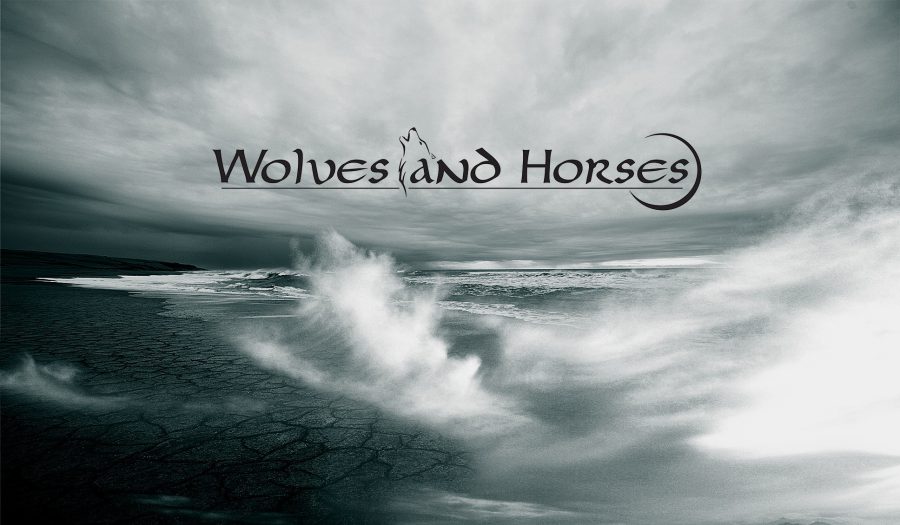
Interview with: Wolves and Horses
Conducted by: Michael Barnett
Wolves and Horses have just taken part in a recent Cryo Chamber album, entitled Tomb of Seers, alongside Council of Nine, Alphaxone, and Xerxes the Dark. It was immediately obvious that this artist stood out from a lot of the current dark ambient musicians. Wolves and Horses has a style that falls somewhere between ambient and dark ambient, or as Christian likes to call it “dark ethnic gothic ambient”. I was immediately curious about the background of this artist. A quick search led me to some of his previous works and they, too, were quite impressive. So, I did the only thing that made sense, get in touch with the man behind the music and ask him a few questions to illuminate myself and other fans on his story. I hope you will enjoy this read, the first of many interviews on This Is Darkness!
Michael: Thanks so much for agreeing to speak with me, Christian! I must admit I was unaware of your project, Wolves and Horses, before you participated in the Tomb of Seers album on Cryo Chamber. For others, like myself, who may just be finding you for the first time, could you start with giving us a brief description of your sound and background?
Christian Saint-Viteux: Well, it’s always a very difficult question, talking about my work. I try to create atmospheres and to share emotions. At the beginning of the project I used some synths, but they were too artificial, no warmth in them. Now I want to mix all kinds of sounds, all kinds of instruments. A mix of electronic and acoustic, and lots of manipulations, effects. It’s not important to me if a piano doesn’t sound like a piano anymore or a guitar like a guitar. I want it to sound exactly as I want it and sit in the mix. I’ve never been able to define exactly what kind of music I make. I would call it dark ethnic gothic ambient. I hope when you listen to my music, you get a movie or an image in your head and you feel, for a moment, as if in another world. My background is made up of years of listening to music, I have a huge record collection, and I was a radio DJ some years ago. I’ve been to countless concerts. Then I just wanted to make my own music. Just for the fun of it. I was pushed into into taking it more seriously by my wife, and then I met Christer Lunder at UAE Records and we published my first EP. I worked with him for the label, we made a project together, quite a classic route to take.
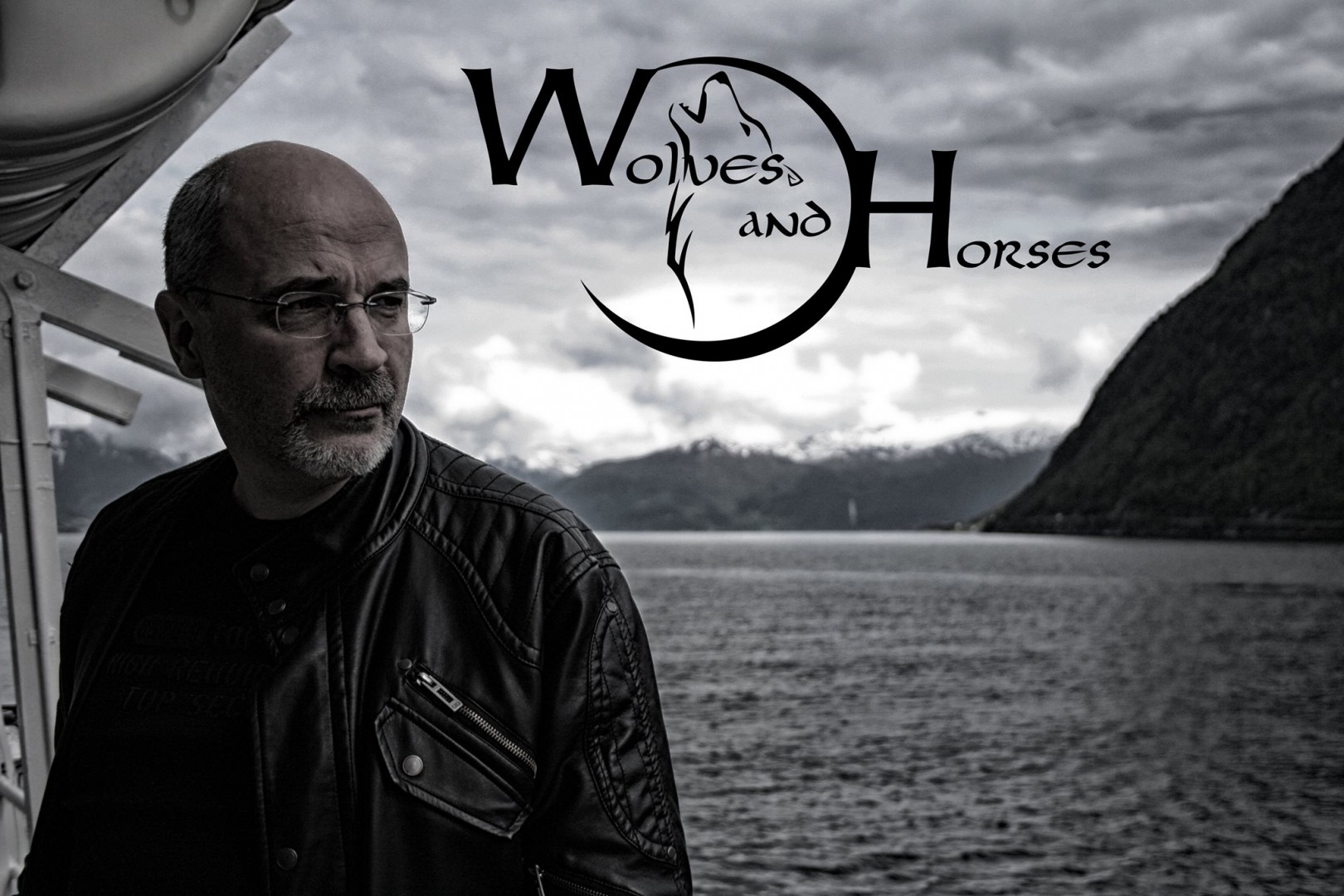
Michael: I find your music to fall into a category, much like SiJ, which lies somewhere in the center, between light and dark ambient music. You have a touch of that new age sound, which I’ve loved since childhood, while you also can cross into territory which is obviously appropriate on places like Cryo Chamber. Do you make a conscious effort to go back and forth, traversing both territories? Or, is this natural for you?
Christian Saint-Viteux: I don’t make a special effort to go anywhere, I’m simply following the sound. When I start a new track, I play/improvise with instruments and sounds that I manipulate till I find a sound that I think is interesting. Then I start to build the track and follow the atmosphere and the mood given by the sounds.
Michael: How important are field recordings to the grand scheme of Wolves and Horses?
Christian Saint-Viteux: Like any sound, it’s really important if it adds something to the sound, to the music. The final point is “Does it sounds good ? Do I like it ?” Because, the only way to make music, like any artistic work, is to make something you like and hope you’re not the only one. I’m not able to start a new track thinking: Now I will make something dark, or ambient or whatever. It doesn’t work like that. But, I use a lot of field recordings as a source for granular synths, so you don’t know it’s a field recording, but it is.
Michael: Do you prefer digital or analog, when sound sculpting for a new album? Do you use a bit of each, or exclusively stick to one technique?
Christian Saint-Viteux: Same thing, I don’t want to be stuck to one technique or another. It’s like closing a door for me. I just want to find the sound to communicate the emotion, the atmosphere. If it’s analog, virtual or acoustic doesn’t matter. The only point is: Is it the right sound, the sound I want here.
Michael: Who are some of the artists that have made the biggest impact on your life and your music?
Christian Saint-Viteux: So many, so many. If I have to select a couple, I would say David Bowie for his artistic freedom, same for David Sylvian. Dead Can Dance for their effort to mix different genres and different cultures while staying true to themselves. Brian Eno for his continuous search for new techniques, new sounds. Also Peter Bjärgö, Ulf Söderberg, and Wardruna…
Michael: How did you come in contact with Cryo Chamber?
Christian Saint-Viteux: I don’t remember how and when but I have been listening to their artists for a long time now, Atrium Carceri, Northumbria, Ugasanie, Alphaxone.
Michael: Has this latest album, Tomb of Seers, been your first collaboration with other artists?
Christian Saint-Viteux: I knew Xerxes the Dark from the label UAE Records. I was involved in this label with my friend Christer and we were planning to release him on the label. Sadly, the label had to stop for different reasons. Xerxes introduced me to Mehdi, Alphaxone, I was really happy about that because I really like his music. Council of Nine was the last (but not least) to join the project. His track “Chimes of the Unfortunate” is one my favourite dark ambient tracks ever. So you can imagine how great it was to have him on board.
Michael: How has your experience been working with Cryo Chamber on Tomb of Seers? Are you happy with the final product?
Christian Saint-Viteux: How not to be happy ? Working on the project with these guys was a pleasure, I’m happy with Simon’s mastering and I think the end result is the album we wanted to make. So, yes, that was a good experience.
Michael: Do you, personally, believe in the clairvoyant powers of a seer, or was this just an interesting topic to use for the album’s direction?
Christian Saint-Viteux: Depends how you feel about seers. I don’t believe in a “magic power” of guys able to read the future in different signs. I think some people have a better vision of the world and its evolution and that they can see things coming more clearly than others.
Michael: While on the topic of clairvoyance and the occult, do you have any specific rituals that you follow, when sitting down to work on an album? The use of incense, meditation, or something like this?
Christian Saint-Viteux: Making music IS my ritual. Life is sometimes difficult and full of stress and fears, for you and for those close to you. When I start to work in the studio, it’s like closing the connections to the outside world for a while. It’s the best way for me to clear my head. The best way to be relaxed.
Michael: What sort of instruments do you play? Are these all things that can be heard throughout your various albums, or are some of them left separated from your ambient career?
Christian Saint-Viteux: Mainly keyboards but I also have a guitar, and a bass. I don’t pretend to be an excellent guitarist, of course, but it’s enough to record some lines that I can use in my tracks. Most of the sounds you hear in my music are made by manipulating sounds anyway.
Michael: What are some things that inspire you? Places in nature, films, paintings, etc.?
Christian Saint-Viteux: Books and paintings, no doubt. When I work on my music, I always have a story or an image in mind.
Michael: Is Wolves and Horses your only musical outlet, or do you have other projects?
Christian Saint-Viteux: I also have the project First Falling Leaves with Christer Lunder. On hold right now, but we still hope to find the time to work on new music. I’m thinking about another project but it’s really fresh, just starting, I can’t say a lot about it right now.
Michael: What can we expect in the near future from Wolves and Horses?
Christian Saint-Viteux: I’m working on new dark ambient tracks. I would like to make a release with some visual artists, but it’s a long term project, no planning. I would like to find someone who could make some vocal improvisations (Lisa Gerrard style) for a couple of ideas I have.
Michael: Do you believe that the apocalypse is coming? If so, how do you think it will happen?
Christian Saint-Viteux: I hope not. But our world is changing, completely, our children will live in a totally different world, that’s for sure. I wish a better one but it’s not going in this direction for the moment.
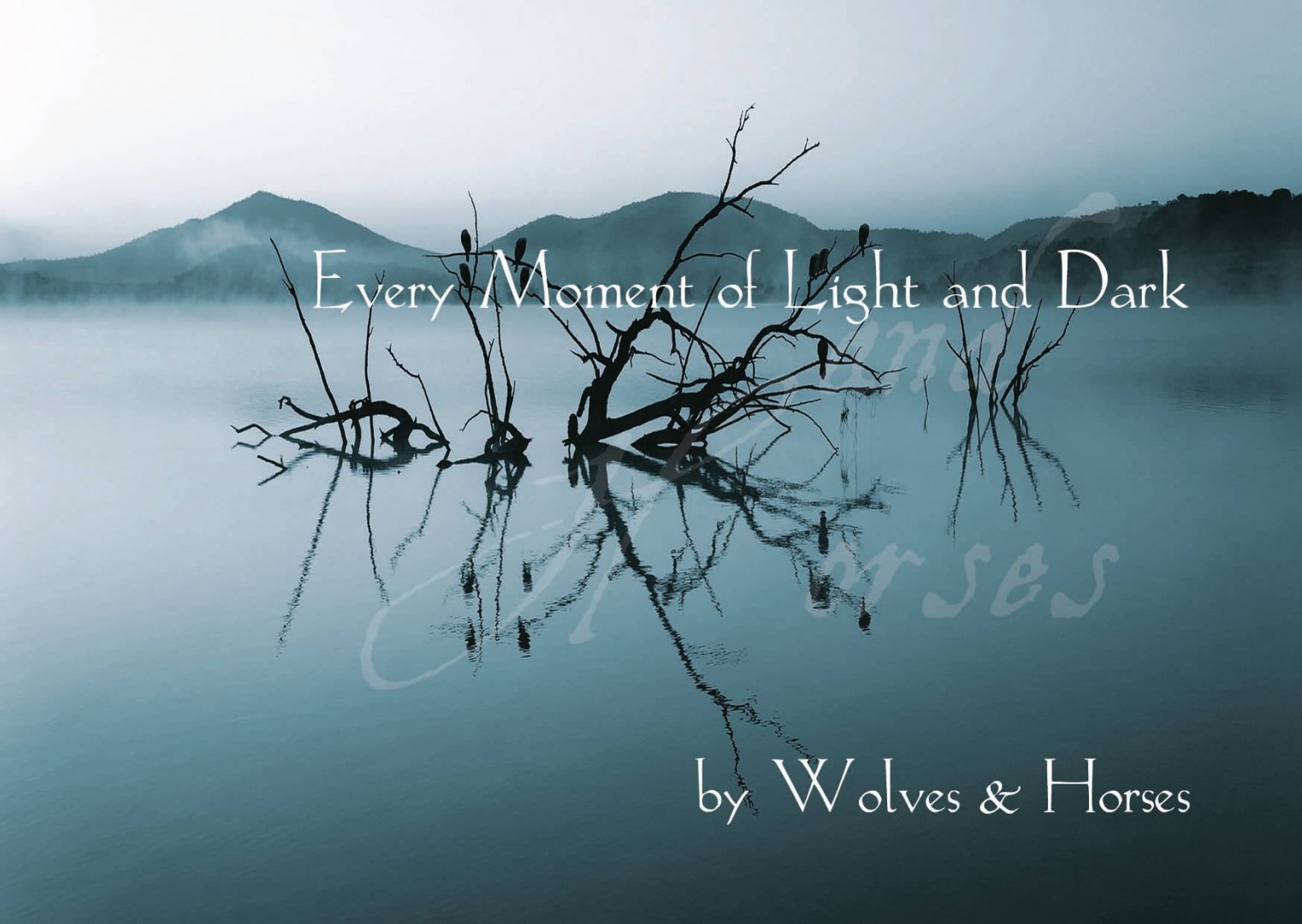
Michael: Are you a trained photographer, or is this a hobby of yours? I absolutely love your album art for Every Moment of Light and Dark, which was released in 2015 on UAE Records.
Christian Saint-Viteux: This is my second passion, I like to paint, sketch and play with pictures. I’m a big fan of digital painting. Matte painting in particular, I think it’s great to be able to create an imaginary world with only your imagination as a limit. I made some cover for UAE Records and some other artists and I really like that. So guys, if you need a cover…..
Michael: Does your home-country of Belgium have any sort of great influence on your music?
Christian Saint-Viteux: Yes and no. I don’t feel I’m attached to a place. The world is full of nice places. And music shows me everyday that there are great people everywhere on this planet. I met very nice people from the UK, USA, Iran, Korea, Australia, Germany, Italy. I’m a world citizen. But Belgium has a huge culture of underground music. In this way, I think it had an influence on my own culture, on my connection with many genres, styles and origins.
Michael: Thank you very much for your time, Christian. I will leave the last words to you!
Christian Saint-Viteux: Thanks Michael. And to all your blog readers, I hope you will enjoy the album as much as I enjoyed making it.
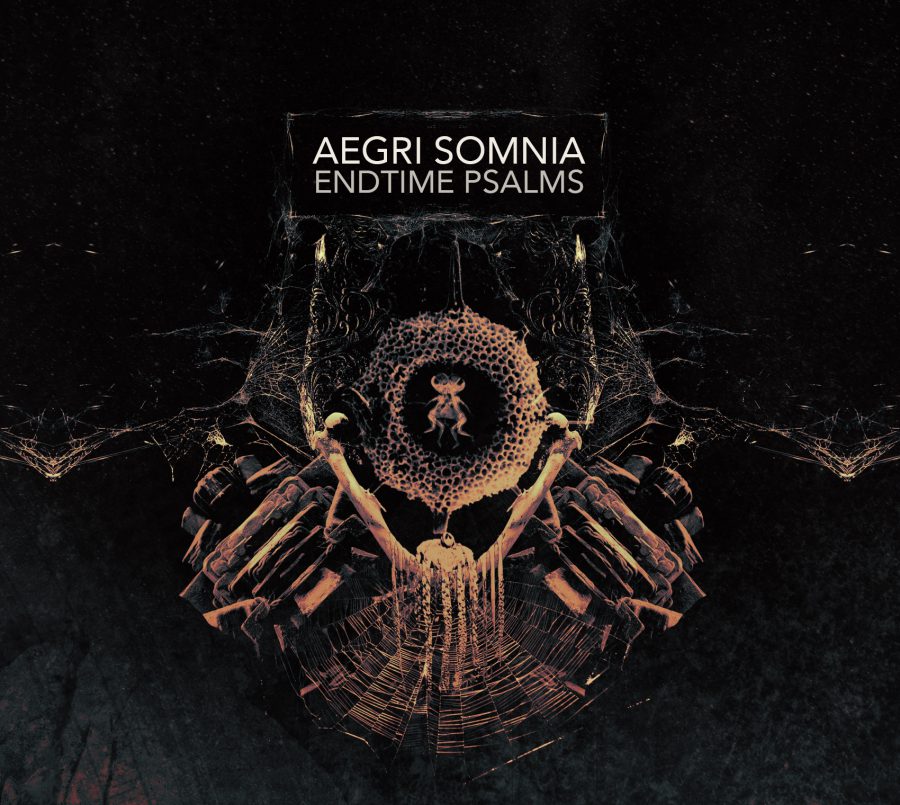
Artist: Aegri Somnia
Album title: Endtime Psalms
Release date: 7 March 2017
Label: Cryo Chamber
Tracklist:
01. C.A.H.R.
02. Archives
03. Endtime Psalms
04. DNA Cult
05. Mundus Moriens
06. Borg Sands
07. Puppets
08. Metamorphosis
09. We Were Stardust
Croatian cinematic dark ambient artist Aegri Somnia delivers another post-apocalyptic gem, this time taking listeners to bold new vistas. Aegria Somnia has been around in one form or another for a decade. 2007 and 2008 saw some early albums by this artist on Kaos Ex Machina Promotions and Dark Winter, respectively.In 2015, Jurica Santek revived Aegri Somnia with Monde Obscure on Cryo Chamber.
Monde Obscure would be a major moment in the career of this dark ambient artist. It would bring his soundscapes to the forefront of the dark ambient genre, greatly due to it’s release on the monolithic Cryo Chamber label. Monde Obscure took listeners into the underground tunnels, basements, and fallout shelters of a dead world. Aegri Somnia is at his best when depicting a world dying or already deceased.
Monde Obscure featured static landscapes, which seemed mostly devoid of life. Now, with Endtime Psalms, we find similarly decrepit and irradiated landscapes, but this time humanity is still present. Endtime Psalms is a living and breathing entity. The echoes of our civilizations still reverberate through the decaying walls. It depicts a world that is actively dying, a sentiment that is blatantly referred to in tracks like “Mundus Moriens” which literally translates to ‘dying world’.
From a technical standpoint, Endtime Psalms will sound familiar to fans of Monde Obscure. Yet, there is noticeable evolution here in the soundscapes. It is worth noting that Jurica Santek has recently released several albums under his alias, Tertium Organum. It seems that project may have given some influence to Aegri Somnia. Endtime Psalms uses a good bit more drone than we heard on Monde Obscure. This doesn’t totally change the face of the project, but it does add a depth that wasn’t previously afforded. The soundscapes now have a solid foundation, a sweeping, doom-laden dronework which rarely subsided on Endtime Psalms. It is, luckily, used in a way that doesn’t overpower the cinematic elements. It mainly adds an extra layer of texture, building up the sense of smog filled atmospheres and acid rains. When, occasionally, the drones do fade away, the field recordings take on a more meaningful tone, giving the listener a cue to focus more specifically on their narrative.
Within this dying world we are offered visions of its inhabitants. Fleeting images of the doomsday cults, which have come to prominence. We must imagine that these cults, years before, were laughed at, prodded and ridiculed for their depressing predictions. Yet, here in the era of Endtime Psalms, we see that the joke was on the naive.
The world seems to have warmed significantly. Tracks like “Archives” and “Mundus Moriens” have a marine element that rarely fades. We are forced to accept the effects of global warming. The poles have melted, the glaciers are no more. In this new world many lands have been submerged. Humanity was forced inland. Whole nations have been submerged. Thus is the world of the Endtime Psalms.
Tracks like “DNA Cults” and “Puppets” must allude to the rise to prominence of the doomsday cults. With the world set on an irreversible trajectory towards utter annihilation, these fore-tellers of doom have been given due credence. Gone are the hopes of salvation, washed away with the millions of lives that have already expired. These cults now rule the lands. Their worshipers, enshrouded in the filth of the land, listen attentively for some sense of hope. Yet, there will be no hope, all is already lost.
Of course, this is just one interpretation of an album which packs enough cinematics to keep listeners’ imaginations inflamed. Each play-through conjures new landscapes in the devastation. It is certainly clear that humanity now lies in ruin, but the time-line and cultural shifts are left to the imaginings of each individual.
After such an impressive product as Monde Obscure, one could wonder how Aegri Somnia would top its achievements. Jurica Santek doesn’t try to conquer his previous work, instead he moves off to the side, building a new foundation, with new stories, even if they fall within the same general narrative. Like its predecessor, Endtime Psalms is the epitome of cinematic dark ambient. Aegri Somnia is one of the best at conjuring narratives and irradiated landscapes. He affords listeners enough flexibility for their imaginations to run wild. I would absolutely recommend Endtime Psalms to any fan of the cinematic dark ambient style. The evolution of the Aegri Somnia sound has been worthwhile. There are no setbacks; no points where we could look to the past in critique of the present. This is the end of humanity, delivered neatly in the form of dark ambient. Where once we ruled supreme, now we cower in trepidation. Endtime Psalms is the soundtrack to our undoing.
Written by: Michael Barnett
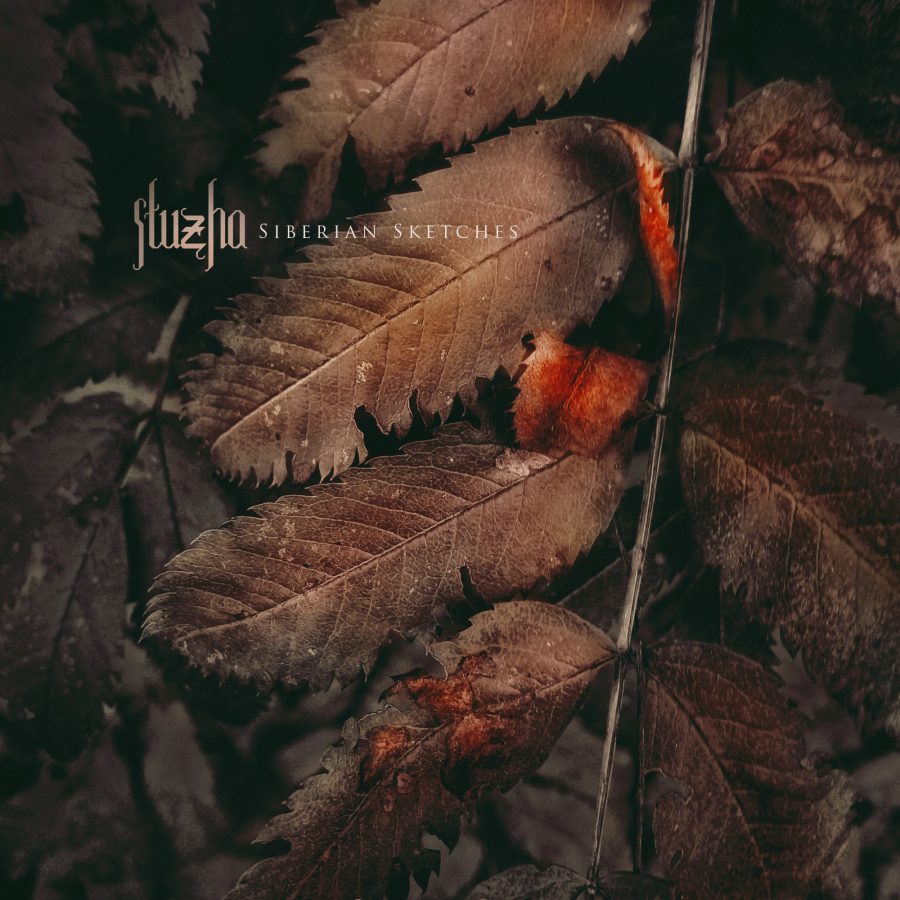
Artist: Стужа(Stuzha)
Album title: Siberian Sketches
Re-issue release date: 22 October 2016
Label: Ksenza Records / Infinite Fog Productions
Tracklist:
01. Дождливая Ночь [A Rainy Night]
02. Дети Подземелья [Children of the Underworld]
03. Печаль [The Sadness]
04. Туман [The Fog]
05. Воющий Перевал [The Howling Pass]
06. Болотная Топь [Marsh Swamp]
07. У Ручья [Forest Stream]
08. Родина [The Homeland]
09. Море [The Sea]
 From 2006 forward, Daniil Kazantsev, an artist from Novosibirsk, Siberia, began his journey into varied versions of ambient music. His initial project Algol, which is still active today, self-released Searching for Inner and Outer Void. To this day there are now six albums from Algol, making it his main project. There is also the nascent project, Black Wanderer, which should be making more news in the coming year.
From 2006 forward, Daniil Kazantsev, an artist from Novosibirsk, Siberia, began his journey into varied versions of ambient music. His initial project Algol, which is still active today, self-released Searching for Inner and Outer Void. To this day there are now six albums from Algol, making it his main project. There is also the nascent project, Black Wanderer, which should be making more news in the coming year.
Stuzha, however, is the focus of this review. The album Siberian Sketches has its roots as far back as 2008 when it was self-released. Since that time, the album has gone through several re-releases. But in 2016, it finally found its proper release on Ksenza Records and distribution through Infinite Fog Productions, both Russian companies. This re-release has brought along with it a bonus track, the addition of bass guitar, and a proper physical release in a brilliant digipak, donning all new album-art.
Focusing on the Siberian landscape, during spring and fall, Siberian Sketches looks to take a glimpse into different parts of Daniil Kazantsev’s environment. Throughout the entirety of the album there is the dense presence of field recordings. In fact, much of the album is only field recordings complemented by electric and acoustic guitar as well as the new addition of bass guitar.
 Siberian Sketches is sort of an ode to the landscape. Tracks like “Печаль [The Sadness]” and “Болотная Топь [Marsh Swamp]” beautifully accomplish this task. Both having sounds of running waters and rain. After the long Siberian winter, it becomes as likely that this is the melting run-off of snow as it could be some gentle brook, babbling and meandering through the chilly landscape.
Siberian Sketches is sort of an ode to the landscape. Tracks like “Печаль [The Sadness]” and “Болотная Топь [Marsh Swamp]” beautifully accomplish this task. Both having sounds of running waters and rain. After the long Siberian winter, it becomes as likely that this is the melting run-off of snow as it could be some gentle brook, babbling and meandering through the chilly landscape.
The other major element presented on Siberian Sketches is the use of traditional Russian music samples. The album opens with “Дождливая Ночь [A Rainy Night]”, a track which incorporates choral, operatic singing over great gusts of wind and dripping waters. As if there is some great storm raging outside the cathedral. This theme is revisited on “Родина [The Homeland]”, a magnificent track. Rain, thunder and rushing waters are heard over a contemplative acoustic guitar melody. Birds are chirping, the Siberian landscape truly comes to life. Closing one’s eyes will likely send them soaring into these remote lands, in a part of the world which is rarely witnessed. As the track moves into its second half the field recordings momentarily fade out, leaving us with a lonely yet beautiful piano section. The thunder storm re-emerges, and with it comes some more of these beautiful Russian song samples. A sort of operatic female singer delivers her lines over the backdrop of a male choir, all the while thunder and great torrents of rain can be heard pummeling the Earth.
 Some points in the album can seem slightly disjointed. For instance, the use of field recordings depicting a person walking through the muddy landscape don’t sit well thematically alongside other sounds of traditional vocals and guitar, which should be presented in a static location. Logistical issues like this happen on several tracks. Yet, this is no reason to disregard the talents and technical prowess of Stuzha. He accomplishes plenty of beautiful work throughout Siberian Sketches. Also, we must remember that this album was originally released almost a decade ago. Stuzha has had much time to hone is talents over the years. One need look no further than his latest album Бутугычаг[Butugichag] to see that he’s learned from his past works and can now deliver an album which stays perfectly on topic and presents no inconsistencies.
Some points in the album can seem slightly disjointed. For instance, the use of field recordings depicting a person walking through the muddy landscape don’t sit well thematically alongside other sounds of traditional vocals and guitar, which should be presented in a static location. Logistical issues like this happen on several tracks. Yet, this is no reason to disregard the talents and technical prowess of Stuzha. He accomplishes plenty of beautiful work throughout Siberian Sketches. Also, we must remember that this album was originally released almost a decade ago. Stuzha has had much time to hone is talents over the years. One need look no further than his latest album Бутугычаг[Butugichag] to see that he’s learned from his past works and can now deliver an album which stays perfectly on topic and presents no inconsistencies.
Siberian Sketches is alive and breathing. The landscape of Siberia comes to life. It can easily leave the listener daydreaming about making a proper visit to these remote lands. With the likelihood of Siberian Sketches II being just around the corner, we have plenty to look forward to in a career which seems to be finally finding its place in the ambient/dark ambient world. I would highly recommend Siberian Sketches to any dark ambient fans who love variety and constant activity in their music. This easily delivers entertainment and brilliant atmosphere for the entirety of the album. We must now only wait for the next chapter in the life of this promising artist.
Note: I’ve recently interviewed Stuzha, it can be found here.
Written by: Michael Barnett
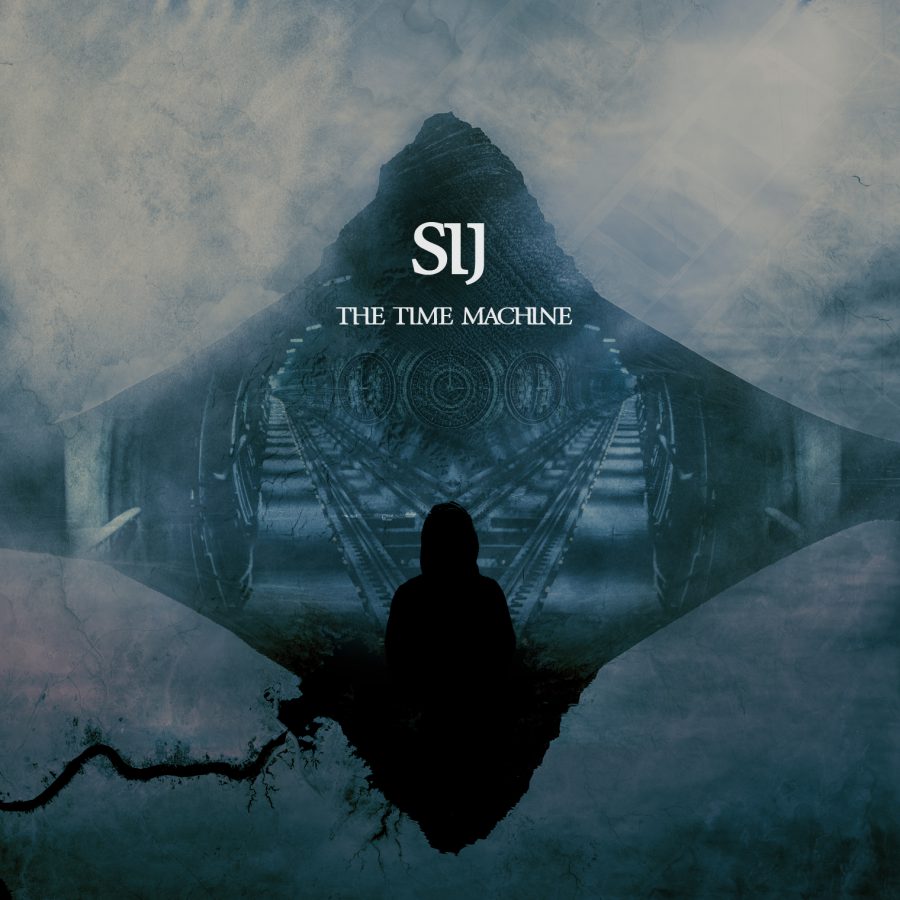
Artist: SiJ
Album title: The Time Machine
Release date: 21 February 2017
Label: Cryo Chamber
Tracklist:
01. Forwards in Time
02. A Place to Live
03. In Ancient Times
04. Instantaneous
05. Floating Clouds
06. Realm of Eternal Rain
07. Particulate Matter
08. Morlock’s Path
09. The Death of the World
10. Vision of Hell
11. Shine of Dark
SiJ is the ambient project of Vladislav Sikach. He’s been a prolific player in the ambient / dark ambient scene for the last few years. After self-releasing a number of albums, SiJ has made his way into the Cryo Chamber roster of dark ambient musicians. This very concept of joining a dark ambient label has clearly reflected a shift in the sound of SiJ. Where previously there was abundant piano work and more positive and celestial field recordings and drones, he has shifted to a style which still has many of these elements, but they are used in a different way.
His first encounter with Cryo Chamber delivered a brilliant performance. The collaboration with Textere Oris, Reflections Under The Sky, featured cold, rainy elements. The music had a thick emotional texture, yet the sense of darkness came mostly from the choices of environment. His latest release, The Time Machine, takes on a story-driven cinematic experience.
The album title, The Time Machine, is a clear reference to the book of the same name by H.G. Wells. As such, we are taken on an adventure through the course of the album. The Time Machine starts out with a protagonist character at its central theme. The opening track “Forward in Time” is a clear reference to the protagonist taking a time machine forward into the future. All sounds on this track lend themselves to a forward moving dynamic.
As we move further in the album the protagonist will make several stops and revelations. “A Place to Live” and “Floating Clouds” have clearly positive vibes, much like the opening track. While “In Ancient Times” gives us a glimpse into the distant past. Sounds of oscillating whispers and a distant drumbeat help to paint the picture of this early stage of humanity, when it still had tribal foundations.
Proceeding to the second half of The Time Machine, it is obvious that things are taking a turn for the worse, thematically speaking. “Realm of Eternal Rain” and “Particulate Matter” both feature prominent sounds of rain. As the one track moves into its successor, we can sense a darkness enveloping the landscape. Feelings of isolation and loneliness take the lead as the drones take on a fuller, more ominous feel.
“Morlock’s Path” dives into full darkness. The Morlocks of H.G. Wells novel are a subterranean people, working ceaselessly in deep mine shafts. We are cued to the changes by what starts with sounds of hooting owls, alluding to a night-time on the surface of our world, which soon recede, giving way to dripping waters, hollow drones, and the occasional metallic hammering, all seeming to represent the mine works. The darkness quickly becomes all encompassing on “The Death of the World” and “Visions of Hell” as we go deeper into the Earth. All the while, hearing the mining activity all around us. The albums ends with “Shine of Dark” as we return to the surface of the Earth, cuing the return of rain and gentle chimes. Yet, the darkness never lets up as the album draws to its close, conveying a sense of an bleak end to Earth, an inability to right the wrongs.
The Time Machine is possibly the best work to date by SiJ. He applies all the varied techniques he’s mastered over the years to this one album. Not only the technical achievement stands out, the use of a cinematic approach is clearly presented and followed through the album. We are given enough information to have a foundation, without being told what to think of the album’s shifts in plot. I would highly recommend The Time Machine to fans of active forms of dark ambient, sounds which will evolve over the course of the album. There is plenty here to stay entertained. Yet, like any good dark ambient album, it is easy to allow this to fall into a secondary role, providing an intricate background music to other activities.
Written by: Michael Barnett

